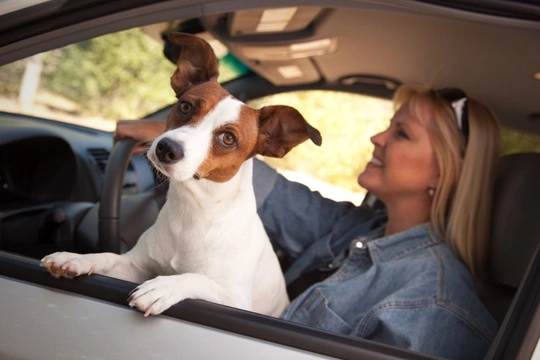
Dog owners: Are you in breach of rule 57 of The Highway Code?
Anyone who has a driving licence in the UK or that is in the process of learning to drive will have spent a lot of time at some point getting to grips with The Highway Code – the UK’s formal manual of rules and regulations for road users.
These rules encompass not only drivers of vehicles, but also pedestrians, cyclists and other road users too, and they outline the legal obligations (and penalties) for road users of all types when it comes to keeping themselves and others safe on the roads.
Many of us learn large chunks of The Highway Code in preparation for taking the driving test or our driving theory test, but few of us can remember the full ins and outs of the rules a few years or even months later, and we are rarely as conscientious about refreshing our knowledge of the Code as we should be.
This means that a lot of dog owners don’t actually know (or don’t remember) that there is a specific rule within The Highway Code that pertains to dogs, and the responsibilities of drivers who carry a dog in the car; and so a lot of dog owners are actually in breach of this rule as a result.
Rule 57 of The Highway Code is concerned with outlining the rules for keeping dogs safely secured and contained when in transit, and in this article we will explain in more detail what Rule 57 states, and how to ensure that you are in compliance with it. Read on to learn more about your responsibilities as a dog owner to secure your dog when in the car.
What is Rule 57 of The Highway Code?
Rule 57 of The Highway Code states that the driver of a vehicle travelling with a dog in it must do the following:
“When in a vehicle make sure dogs or other animals are suitably restrained so they cannot distract you while you are driving or injure you, or themselves, if you stop quickly. A seat belt harness, pet carrier, dog cage or dog guard are ways of restraining animals in cars.”
Whilst Rule 57 does not outright state that dogs must be restrained using devices like a seat belt harness, carrier, cage or dog guard, it does state that dogs must be suitably restrained; so if you are travelling with a dog that is not secured by one of these measures, they probably aren’t suitably restrained, and will be viewed as such in the eyes of the law.
What is the danger posed by unrestrained dogs in cars?
Unrestrained dogs travelling in cars can cause hazards and dangers, both for the occupants of the vehicle they are in and for other road users too.
The first issue with travelling with an unrestrained dog is that the dog can cause a distraction or hazard to the driver. This may occur due to the dog moving around in the car and so, splitting the driver’s attention, or it may happen because the dog physically obstructs or disturbs the driver while the car is moving.
Either of these things could of course result in a serious accident that harms both the occupants of the car and other road users too.
The other big risk of an unrestrained dog in the car occurs in the event of an accident, even if the dog was perfectly well behaved and had no part to play in it.
We wear seatbelts in the car in order to keep us restrained in the event of an accident, and wearing seatbelts dramatically reduces the likelihood of the wearer becoming seriously injured or even killed in the event of a crash.
Seat belts limit movement and help to protect us against being thrown around in the event of a crash, but if your dog is not restrained too, they won’t be similarly protected – and in an accident, they may risk serious injury and also, potentially hurt you and other people too.
In the event of a serious impact or very sudden stop, an unrestrained dog in a car will be thrown around and become a large, heavy and fast-moving object.
Research data collated by car insurance provider Direct Line indicates that in the event of a crash at just 30mph, an unrestrained dog weighing around 32kg (think Labrador retriever-type size) would be thrown forwards with around 100kg of force – enough to throw them straight out through the windscreen, and to potentially kill or seriously injure anyone that they were thrown into within the car too.
Rule 57-compliant restraints for dogs in cars
In order to reduce the risk of your dog causing an accident in the car or becoming injured or injuring others in the event of an accident, your dog must be properly restrained for the journey.
Vets, insurance companies and the police and highways authorities agree that suitable restraints for dogs in cars (depending on the size of the dog) include specially designed seatbelt harnesses for dogs, pet carriers, dog cages and dog guards.
Luggage guards between the boot and the back of the car, and collar leads attached to a seatbelt to secure your dog are generally considered not to provide enough restraint for a dog in the car, and so are not suitable under the remit of Rule 57.



